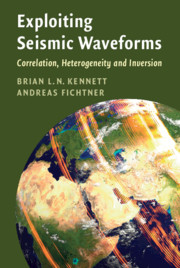Book contents
- Frontmatter
- Dedication
- Contents
- Preface
- 1 Introduction
- Part I Building the Seismic Wavefield
- Part II Correlation Wavefields
- 5 Correlations and Transfer Functions
- 6 Correlations and Interferometry
- 7 Correlations and Ambient Noise
- 8 Coda Correlations
- 9 Correlations in Receiver Studies
- Part III Interaction of Seismic Waves with Heterogeneity
- Part IV Inversion for Earth Structure
- Appendix Table of Notation
- Bibliography
- Index
9 - Correlations in Receiver Studies
from Part II - Correlation Wavefields
Published online by Cambridge University Press: 16 November 2020
- Frontmatter
- Dedication
- Contents
- Preface
- 1 Introduction
- Part I Building the Seismic Wavefield
- Part II Correlation Wavefields
- 5 Correlations and Transfer Functions
- 6 Correlations and Interferometry
- 7 Correlations and Ambient Noise
- 8 Coda Correlations
- 9 Correlations in Receiver Studies
- Part III Interaction of Seismic Waves with Heterogeneity
- Part IV Inversion for Earth Structure
- Appendix Table of Notation
- Bibliography
- Index
Summary
The autocorrelation of the signals at a seismic station corresponds to the scenario with a coincident virtual source and receiver. For energy arriving from distant sources, the auto-correlation can be related directly to the structural reflectivity beneath the receiver. We show how the auto-correlation of seismic signals can provide information on reflections without conversions, and can be exploited to provide indirect imaging of heterogeneous structure. Correlations between signals at different sensors can also be exploited in reflection work to provide virtual sources that provide new ways of imaging complex structure.
- Type
- Chapter
- Information
- Exploiting Seismic WaveformsCorrelation, Heterogeneity and Inversion, pp. 200 - 218Publisher: Cambridge University PressPrint publication year: 2020

